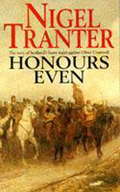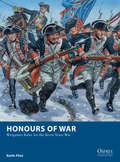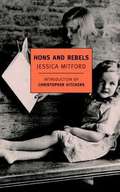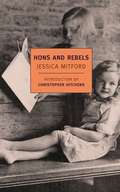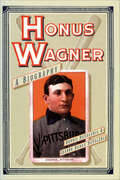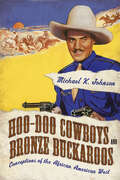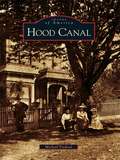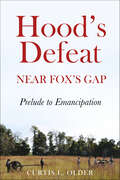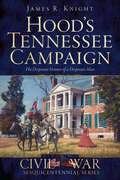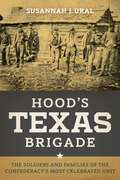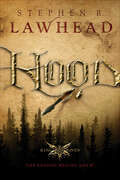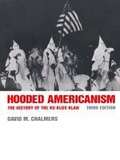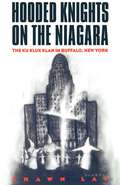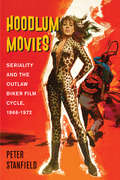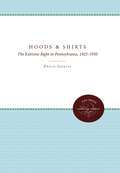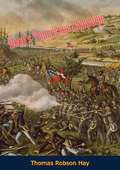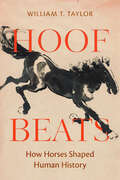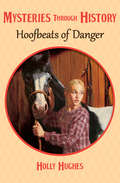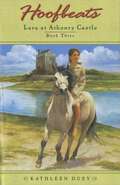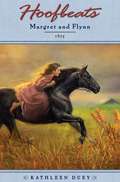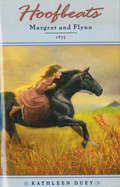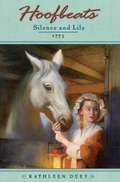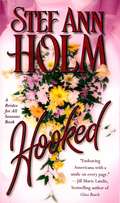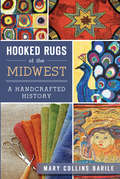- Table View
- List View
Honours Even
by Nigel TranterIn 1649 Charles II left his exile in the Netherlands and sailed toScotland. Arriving at the small fishing village of Garmouth, he faced amixed reception from the minister of the Kirk.The exiled king was to remain in Scotland for a year, learning moreabout his northern subjects, while the English tried to adjust to lifeunder the puritanical heel of the Lord Protector, Oliver Cromwell.But Cromwell was soon to turn his attentions to matters north of theborder. He coveted the Honours of Scotland - the crown, sceptres andsword-of-state - symbols of hope and the nations's honour.And so the young men of Scotland were forced into battle to save theHonours...The gripping story of Charles II's year in Scotland and Scotland's bravestand against Oliver Cromwell, told by Nigel Tranter, master of Scottishhistorical fiction.
Honours Even
by Nigel TranterIn 1649 Charles II left his exile in the Netherlands and sailed toScotland. Arriving at the small fishing village of Garmouth, he faced amixed reception from the minister of the Kirk.The exiled king was to remain in Scotland for a year, learning moreabout his northern subjects, while the English tried to adjust to lifeunder the puritanical heel of the Lord Protector, Oliver Cromwell.But Cromwell was soon to turn his attentions to matters north of theborder. He coveted the Honours of Scotland - the crown, sceptres andsword-of-state - symbols of hope and the nations's honour.And so the young men of Scotland were forced into battle to save theHonours...The gripping story of Charles II's year in Scotland and Scotland's bravestand against Oliver Cromwell, told by Nigel Tranter, master of Scottishhistorical fiction.
Honours of War
by Steve Noon Keith FlintThe Seven Years' War was the pinnacle of 18th-century warfare, with dramatic campaigns and battles, famous leaders, and wide variety of colourful uniforms. Compared with the later Napoleonic Wars, tactics were simpler, armies more professional, and battles tended to be smaller. Using these quick-to-learn rules, players can bring this period to the tabletop, recreating anything from a small skirmish to a major pitched battle. Although simple, the rules allow for a wide range of tactics and reward historical play. That said, fog of war sometimes produces unexpected results and units don't always obey their orders! The game movies quickly, and players must be prepared to regroup and counterattack or to press home an advantage - a lot can happen in one move!
Hons and Rebels
by Jessica MitfordIn this reprint of the 1960 and 1989 editions, Christopher Hitchens, a Vanity Fair columnist and visiting professor of liberal studies at the New School, introduces a memoir of the unconventional British upbringing of Jessica Mitford (1917-1997). The muckraking journalist is best known for The American Way of Death (1963), her exposé of the funeral industry. Mitford family photos are included. Annotation ©2004 Book News, Inc., Portland, OR (booknews.com)
Hons and Rebels: The Classic Memoir Of One Of Last Century's Most Extraordinary Families (New York Review Books Classics)
by Jessica Mitford Christopher HitchensJessica Mitford, the great muckraking journalist, was part of a legendary English aristocratic family. Her sisters included Nancy, doyenne of the 1920s London smart set and a noted novelist and biographer; Diana, wife to the English fascist chief Sir Oswald Mosley; Unity, who fell head over in heels in love with Hitler; and Deborah, later the Duchess of Devonshire. Jessica swung left and moved to America, where she took part in the civil rights movement and wrote her classic expos#65533; of the undertaking business, The American Way of Death. Hons and Rebels is the hugely entertaining tale of Mitford's upbringing, which was, as she dryly remarks, “not exactly conventional. . . Debo spent silent hours in the chicken house learning to do an exact imitation of the look of pained concentration that comes over a hen's face when it is laying an egg. . . . Unity and I made up a complete language called Boudledidge, unintelligible to any but ourselves, in which we translated various dirty songs (for safe singing in front of the grown-ups). ” But Mitford found her family's world as smothering as it was singular and, determined to escape it, she eloped with Esmond Romilly, Churchill's nephew, to go fight in the Spanish Civil War. The ensuing scandal, in which a British destroyer was dispatched to recover the two truants, inspires some of Mitford's funniest, and most pointed, pages. A family portrait, a tale of youthful folly and high-spirited adventure, a study in social history, a love story, Hons and Rebels is a delightful contribution to the autobiographer's art.
Honus Wagner: A Biography
by Dennis DeValeria Jeanne Burke DeValeriaAn in-depth biography of one of baseball's greatest legends, the speedy shortstop and power hitter, Honus Wagner, also known as the "the Flying Dutchman"."We think we have made a deal which will materially help us out," Fred Clarke, manager of the National Louisville Colonels, prophetically told the local media in 1897. "After negotiating for some days we have succeeded in securing Hans Wagner...He is a big, heavy German, with very large hands, and is powerful as a bull. He kills the ball." A few years later, the widely read sportswriter Hugh Fullteron would refer to Wagner as "the nearest approach to a baseball machine ever constructed."Honus Wagner is generally acknowledged as the finest shortstop in baseball history. Along with Babe Ruth, Ty Cobb, Christy Mathewson, and Walter Johnson, he was one of the first five players to be elected to the Baseball Hall of Fame. His rare 1909 baseball card--known to collectors as the Holy Grail of American memorabilia--fetched nearly half a million dollars at auction in 1991. His rise paralleled the development of baseball as the national pastime, and his playing skills remain legendary. He was, possibly, the first superstar of American sports.And yet, amazingly, a full-length biography of Honus Wagner had never before appeared. Here, Dennis and Jeanne DeValeria tell the sports hero's whole story. The son of German immigrants, Wagner (1874-1955) grew up in Andrew Carnegie's Pittsburgh, working in coal mines at age twelve. At age thirteen he worked in a steel mill; at twenty-one he was a professional baseball player. Despite his hardscrabble background, he came to be respected by those in the highest reaches of American society: when he became an icon, he would know President Howard Taft and industrialist Henry Ford. And with prestige came wealth: one of the highest-paid players in the game, he was among the first in his hometown to own an automobile. At a time when baseball was a raw, aggressive game played by rugged men, the unflappable Wagner's humble ways enhanced his miraculous performance throughout his twenty-one-year career, including three seasons with the Louisville Colonels and eighteen with the Pittsburgh Pirates. Wagner's gradual emergence from the pack into stardom and popularity is described here in rich detail. But the book also reveals much of Wagner's family and personal life--his minor league career, his values, his failed business ventures during the Depression, his later years--about which, until now, there had been no well known narrative.Neither the "rowdy-ball" ruffian nor the teetotal saint constructed of legend, Wagner is presented here in a complete portrait--one that offers a vivid impression of the era when baseball was America's game and the nation was evolving into the world's industrial leader.
Hoo-Doo Cowboys and Bronze Buckaroos: Conceptions of the African American West (Margaret Walker Alexander Series in African American Studies)
by Michael K. JohnsonHoo-Doo Cowboys and Bronze Buckaroos undertakes an interdisciplinary exploration of the African American West through close readings of texts from a variety of media. This approach allows for both an in-depth analysis of individual texts and a discussion of material often left out or underrepresented in studies focused only on traditional literary material. The book engages heretofore unexamined writing by Rose Gordon, who wrote for local Montana newspapers rather than for a national audience; memoirs and letters of musicians, performers, and singers (such as W. C. Handy and Taylor Gordon), who lived in or wrote about touring the American West; the novels and films of Oscar Micheaux; black-cast westerns starring Herb Jeffries; largely unappreciated and unexamined episodes from the "golden age of western television" that feature African American actors; film and television westerns that use science fiction settings to imagine a "postracial" or "postsoul" frontier; Percival Everett's fiction addressing contemporary black western experience; and movies as recent as Quentin Tarantino's Django Unchained.Despite recent interest in the history of the African American West, we know very little about how the African American past in the West has been depicted in a full range of imaginative forms. Hoo-Doo Cowboys and Bronze Buckaroos advances our discovery of how the African American West has been experienced, imagined, portrayed, and performed.
Hood Canal
by Mike FredsonFjord-like Hood Canal channels beneath the snowcapped Olympic National Park, creating a summer paradise of warm days and inspiring scenery as well as a haven for marine life and watercraft. For eons, Twana Indians crisscrossed in canoes that sliced through water like salmon. The canal's first tourist, Captain Vancouver, sailed a launch down the scenic route in 1792. For the next century, a mosquito fleet of tugboats, stern-wheelers, fishing boats, and barges ferried the men who came for logging or land. By 1889, lumberman and legislator John McReavy promoted Union City as "Venice ofthe Pacific." In the 20th century, canal use shifted from logging to recreation as wealthy Easterners, San Francisco expatriates, and artists founded hunting lodges, fishing resorts, and even an artist colony. The Navy Yard Highway introduced automobile tourism, and new resorts, including Alderbrook, soon dotted the shoreline. After World War II, families bought summer homes and ski boats. Now, in the 21stcentury, kayaks and personal watercraft skim across the waters, and the canal is more popular than ever.
Hood's Defeat Near Fox's Gap: Prelude to Emancipation
by Curtis L. OlderAn entirely new analysis of the battle for Fox’s Gap during the battle for South Mountain.Hood’s Defeat Near Fox’s Gap is an exceptional analysis of Confederate Brigadier General John Bell Hood’s troop movements during the battle of South Mountain. For the past 160 years, all other authors misplaced Hood’s troop positions on the Fox’s Gap battlefield by approximately a half-mile. The actual location of Hood's attack reconfigures the entire placement of the competing forces in the battle and, thus, the conclusions one makes about the struggle. Other authors did not correctly analyze the geography and topography of the battlefield. The failure to understand the topographical characteristics of the battlefield led other writers to make false assumptions about Hood's movement. Before the publication of Hood’s Defeat Near Fox’s Gap, the battle for Fox’s Gap and South Mountain was never accurately reported or understood.
Hood's Tennessee Campaign: The Desperate Venture of a Desperate Man (Civil War Series)
by James R. KnightThe Tennessee Campaign of November and December 1864 was the Southern Confederacy's last significant offensive operation of the Civil War. General John Bell Hood of the Confederate Army of Tennessee attempted to capture Nashville, the final realistic chance for a battlefield victory against the Northern juggernaut. Hood's former West Point instructor, Major General George Henry Thomas, led the Union force, fighting those who doubted him in his own army as well as Hood's Confederates. Through the bloody, horrific battles at Spring Hill, Franklin and Nashville and a freezing retreat to the Tennessee River, Hood ultimately failed. Civil War historian James R. Knight chronicles the Confederacy's last real hope at victory and its bitter disappointment.
Hood's Texas Brigade: The Soldiers and Families of the Confederacy's Most Celebrated Unit (Conflicting Worlds: New Dimensions of the American Civil War)
by Susannah J. UralOne of the most effective units to fight on either side of the Civil War, the Texas Brigade of the Army of Northern Virginia served under Robert E. Lee from the Seven Days Battles in 1862 to the surrender at Appomattox in 1865. In Hood’s Texas Brigade, Susannah J. Ural presents a nontraditional unit history that traces the experiences of these soldiers and their families to gauge the war’s effect on them and to understand their role in the white South’s struggle for independence.According to Ural, several factors contributed to the Texas Brigade’s extraordinary success: the unit’s strong self-identity as Confederates; the mutual respect among the junior officers and their men; a constant desire to maintain their reputation not just as Texans but as the top soldiers in Robert E. Lee’s army; and the fact that their families matched the men’s determination to fight and win. Using the letters, diaries, memoirs, newspaper accounts, official reports, and military records of nearly 600 brigade members, Ural argues that the average Texas Brigade volunteer possessed an unusually strong devotion to southern independence: whereas most Texans and Arkansans fought in the West or Trans- Mississippi West, members of the Texas Brigade volunteered for a unit that moved them over a thousand miles from home, believing that they would exert the greatest influence on the war’s outcome by fighting near the Confederate capital in Richmond. These volunteers also took pride in their place in, or connections to, the slave-holding class that they hoped would secure their financial futures. While Confederate ranks declined from desertion and fractured morale in the last years of the war, this belief in a better life—albeit one built through slave labor— kept the Texas Brigade more intact than other units.Hood’s Texas Brigade challenges key historical arguments about soldier motivation, volunteerism and desertion, home-front morale, and veterans’ postwar adjustment. It provides an intimate picture of one of the war’s most effective brigades and sheds new light on the rationales that kept Confederate soldiers fighting throughout the most deadly conflict in U.S. history.
Hood: Hood, Scarlet, And Tuck (The King Raven Trilogy #Bk. 1)
by Stephen R. LawheadPrepare yourself for an epic tale that dares to shatter everything you thought you knew about Robin Hood.For centuries, the legend of Robin Hood and his band of thieves has captivated the imagination. Now the familiar tale takes on new life, fresh meaning, and an unexpected setting.Hunted like an animal by Norman invaders, Bran ap Brychan, heir to the throne of Elfael, has abandoned his father's kingdom and fled to the greenwood. There, in a primeval forest of the Welsh borders, danger surrounds him--for this woodland is a living, breathing entity with mysterious powers and secrets, and Bran must find a way to make it his own if he is to survive.Steeped in Celtic mythology and the political intrigue of medieval Britain, Stephen R. Lawhead conjures up an ancient past and holds a mirror to contemporary realities.Full-length Historical FantasyIncludes Author&’s Note: &“Robin Hood in Wales?&”Part of the King Raven seriesBook One: HoodBook Two: ScarletBook Three: Tuck
Hooded Americanism: The History of the Ku Klux Klan
by David J. Chalmers"The only work that treats Ku Kluxism for the entire period of it's existence. . . . the authoritative work on the period. Hooded Americanism is exhaustive in its rich detail and its use of primary materials to paint the picture of a century of terror. It is comprehensive, since it treats the entire period, and enjoys the perspective that the long view provides. It is timely, since it emphasizes the undeniable persistence of terrorism in American life--John Hope Franklin
Hooded Knights on the Niagara: The Ku Klux Klan in Buffalo, New York
by Shawn LayThey came in the dead of night, marking the homes and businesses of their enemies with crude symbols and dire warnings. They plotted against those of other religious faiths and circulated secret lists of alleged traitors to the community and nation. They mailed anonymous threats to those who refused to be intimidated into silence, all the while claiming that they were the true champions of American justice and freedom. The above may seem an accurate description of the sinister activities that distinguished the Ku Klux Klan in the early twentieth century, but in Buffalo, New York, and, in fact, throughout much of the northeastern United States, such activities were as characteristic of the Klan's opponents as of the hooded order itself. While the revived Klan of the 1920s-- the largest and most influential manifestation of organized intolerance in American history--proceeded with relative impunity in many locales, it encountered a very different situation in Buffalo where powerful enemies opposed the organization at every turn. Shawn Lay here provides a riveting portrayal of how the Klan established itself in Buffalo. Most chillingly, he explains how otherwise ordinary, well-established citizens, caught up in a complex set of circumstances, were persuaded to join a notorious secret society that pandered to the darkest impulses in American society.
Hoodlum Movies: Seriality and the Outlaw Biker Film Cycle, 1966-1972
by Peter StanfieldFrom The Wild Angels in 1966 until its conclusion in 1972, the cycle of outlaw motorcycle films contained forty-odd formulaic examples. All but one were made by independent companies that specialized in producing exploitation movies for drive-ins, neighborhood theaters, and rundown inner city theaters. <P><P>Despised by critics, but welcomed by exhibitors denied first-run films, these cheaply and quickly produced movies were made to appeal to audiences of mobile youths. The films are repetitive, formulaic, and eminently forgettable, but there is a story to tell about all of the above, and it is one worth hearing. <P><P>Hoodlum Movies is not only about the films, its focus is on why and how these films were made, who they were made for, and how the cycle developed through the second half of the 1960s and came to a shuddering halt in 1972.
Hoods and Shirts: The Extreme Right in Pennsylvania, 1925-1950
by Philip JenkinsExtreme right-wing groups have always been a part of the American religious and political landscape. The era between the world wars, especially the 1930s, was a particularly volatile period, and by 1940, racist, nativist, and fascist groups had become so visible as to arouse public fears of insurrection and sabotage. In Hoods and Shirts, Philip Jenkins uses developments in Pennsylvania as a case study of the local activities and broader significance of organizations such as the Ku Klux Klan, the Italian Black Shirts, the Silver Legion, the German-American Bund, and Father Coughlin's Christian Front. Pennsylvania's cities were a stronghold of several of the most active extremist movements, and Jenkins argues that while the threats they posed were often exaggerated to benefit the solidarity of the political mainstream, a loose coalition of dozens of these groups nevertheless constituted a formidable political presence in the state. In chapters on each of the major organizations, Jenkins traces their common commitment to a fascist agenda as well as the ethnic and religious differences that divided them. His comprehensive analysis sheds new light on how these right-wing movements influenced the mainstream of American politics in the interwar years.Originally published in 1997.A UNC Press Enduring Edition -- UNC Press Enduring Editions use the latest in digital technology to make available again books from our distinguished backlist that were previously out of print. These editions are published unaltered from the original, and are presented in affordable paperback formats, bringing readers both historical and cultural value.
Hood’s Tennessee Campaign
by Thomas Robson HayThis award-winning book details the Tennessee Campaign of General John Bell Hood and his Army of Tennessee (October-December 1864). This extraordinary account details the strategy, battles, opponents, leadership and other aspects of this extraordinary campaign.After the evacuation of Atlanta, Confederate president Jefferson Davis visited General J. B. Hood’s army and proposed a move northward to cut General William Tecumseh Sherman’s communications to Chattanooga, with the possibility of moving on through Tennessee and Kentucky to “the banks of the Ohio.”In an effort to lure Sherman west, Hood marched in early October to Tuscumbia on the Tennessee River. He waited there for three weeks anticipating Sherman’s pursuit. Instead, Sherman, forewarned by a speech from Davis, sent the Army of the Ohio under General J. M. Schofield to reinforce Colonel George H. Thomas’s force at Nashville. On 15 November 1864, Sherman began his ruinous raid to the sea.Hood ignored Sherman and pushed into Tennessee to scatter the Union forces gathering at Nashville. On 29 November 1864, he failed to cut off Schofield’s retreating army near Spring Hill; the next day, Hood was repulsed with heavy losses at the Battle of Franklin. Schofield hurriedly retreated into Nashville. Hood followed, but delayed for two weeks, awaiting Thomas’s move. On 15 and 16 December 1864, Thomas attacked with precision, crushed the left of Hood’s line, and forced the Confederate army to withdraw to shorter lines. For the first time, a veteran Confederate army was driven in disorder from the field of battle. Thomas’s cavalry pursued vigorously but was unable to disperse Hood’s army, which crossed the Tennessee River and turned westward to Corinth, Mississippi. Hood soon relinquished his command to General Richard Taylor.The war in the West was over.
Hoof Beats: How Horses Shaped Human History
by William T. TaylorJourney to the ancient past with cutting-edge science and new data to discover how horses forever altered the course of human history. From the Rockies to the Himalayas, the bond between horses and humans has spanned across time and civilizations. In this archaeological journey, William T. Taylor explores how momentous events in the story of humans and horses helped create the world we live in today. Tracing the horse's origins and spread from the western Eurasian steppes to the invention of horse-drawn transportation and the explosive shift to mounted riding, Taylor offers a revolutionary new account of how horses altered the course of human history. Drawing on Indigenous perspectives, ancient DNA, and new research from Mongolia to the Great Plains and beyond, Taylor guides readers through the major discoveries that have placed the horse at the origins of globalization, trade, biological exchange, and social inequality. Hoof Beats transforms our understanding of both horses and humanity's ancient past and asks us to consider what our relationship with horses means for the future of humanity and the world around us.
Hoofbeats of Danger (Mysteries through History #2)
by Holly HughesSet in 1860 as the first wagon trains rumble into the American West, this adventure-filled novel centers on a frontier girl and the beloved pony she tries to save Born in the back of a covered wagon traveling west from Vermont, Annie Dawson dreams of someday seeing what&’s on the eastern side of the great Mississippi. For now, she&’ll have to be content living with her parents and younger brother in the Nebraska Territory at the Red Buttes Pony Express station run by her family. That is, until her favorite pony starts going wild, and Annie&’s friend—Pony Express rider Billy Cody—suspects that someone is poisoning her. But who&’d want to hurt gentle Magpie? Indian tribes stirring up trouble? Or the Butterfield Mail, the Pony Express rival that seems to feel threatened by the ponies&’ speed in delivering mail to California? The night before Magpie is scheduled to be put down, Annie steals out to see if her half-Shoshone friend Redbird Wilson can cure Magpie&’s mysterious ailment. But the pony just gets worse. Unsure whom she can trust, Annie must use her wits to find the culprit before Magpie dies and other horses meet the same fate. This ebook includes a historical afterword.
Hoofbeats: Lara at Athenry Castle
by Kathleen DueyNine-year-old Lara is the daughter of the r?-the leader of her cattle-raising clan. While she spends her days tending to the cattle, her heart lies with her beloved gray mare. When Lara goes to the highlands to set the cattle out to graze, she finds the mare in the process of a difficult birth. Lara vows to take care of the foal as a dying promise to the gray mare, and with the help of a childless milk-cow, she cares for the spindly-legged filly. But just when she is confident that the foal can survive, a rival clan captures them both, and throws Lara's life into turmoil. When the filly is eventually given to a titled baron in the castle town of Athenry, Lara, determined to stay with the horse no matter what, goes along. Together, she and her beloved horse face seemingly insurmountable challenges, but all along Lara keeps two things in mind. One day, she will manage to flee, and will set off in search of the family that she was taken from. And she will not leave without her silver mare. .
Hoofbeats: Margret and Flynn, 1875
by Kathleen DueyMargret and her sister Libby are living with Mrs. Fredriksen. Margret wants to stay forever, but not Libby. A sweeping tornado brings an injured horse. Margret lays claim to the horse, naming him Flynn, nursing him back to health, and teaching to ride. She has to convince Libby to stay so she can make Flynn hers.
Hoofbeats: Margret and Flynn, 1875
by Kathleen DueyThe year is 1875, and twelve-year-old orphan Margret and her sister, Libby, are living with the kind Mrs. Fredriksen in her sod house in rural Littleton, Colorado. Margret would be happy to stay forever, but she knows that Libby, with her basic distrust of anyone other than Margret, will have them moving soon enough. Then a tornado sweeps through, bringing with it an injured horse. Immediately Margret lays claim to the horse, naming him Flynn, nursing him back to health, and teaching herself to ride. Now more than ever, Margret yearns for some stability in her life. Somehow, she's got to find a way to convince Libby to stay so she can make Flynn hers. Powerfully written and historically accurate, this is a great addition to the series that's tailor-made for girls who love horses and historical fiction.
Hoofbeats: Silence and Lily, 1773
by Kathleen DueyTwelve-year-old Silence wants a chance to call Lily--a beautiful snow-white mare-- her own which her mother disapproves. Silence learns that someone has kidnapped Lily and begins to worry that if she doesn't do something drastic, she may lose Lily forever.
Hooked
by Stef Ann HolmDelicious tension, hilarious wit, and heated passion make USA TODAY bestselling author Stef Ann Holm's acclaimed Brides books the perfect place to spin dreams and reel in true romance. In the second book of the Brides for All Seasons series, a newspaper reporter reels in true romance and fiery passion.Using an alias, stunt reporter Matthew Gage arrives in Harmony, Montana, to uncover the cheating going on in the town's famous annual fly-fishing contest--not to tangle lines with a husband-hunting miss. But as soon as Meg Brooks gets stuck under his hotel bed, he's hooked on her high-spirited charm. Besides, he hopes she'll provide him with insider information--and a few kisses--while he snoops around. But innocent Meg believes Matthew is "Vernon Wilberforce," a polite carpet-sweeper salesman, the gentleman caller of her dreams. As the fishy scandal threatens to upset Harmony, Meg employs every lure in the book to land Matthew. But her heart will be broken by a man who isn't what he seems...unless they each learn the truth: The best prize in life is given, not won. It's love.
Hooked Rugs of the Midwest: A Handcrafted History
by Mary Collins BarileThe art of rug hooking, which consists of pulling dyed and cut wool fabric pieces through a backing, has typically been associated with New England, the South and Canada. Yet rugs from the American Midwest have contributed just as much to the development of the craft and its continuing popularity. The story of hooked rugs in the Midwest is a ragbag blending of romance, folklore, myth and common sense told through the colors of barns and sky, golden wheat, farm ponds, red clay, red brick, steel, glass and fountains. In this vividly illustrated history, Mary Collins Barile shakes out the dust from the Midwestern hooked rug with the vigor its unique blend of utility and imagination deserves.
